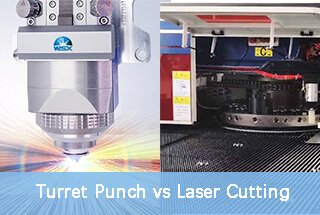Laser cutting technology has revolutionized the traditional manufacturing processes across various industries. One of the primary benefits of laser cutting is its ability to cut or engrave a wide range of materials - including metal, wood, paper, plastic, and more - with precision and accuracy. This advanced technology has not only increased the efficiency but also improved the quality of products in the market.

Laser cutting is a non-contact process that uses a high-powered laser beam to cut or engrave materials precisely. The laser beam is directed by a computer-aided design (CAD) program, which controls the laser's movement and intensity to create complex shapes and intricate designs.
The precision and accuracy of laser cutting technology are unmatched by traditional cutting techniques, making it an ideal process for making intricate designs and customizing products. Laser cutting's high level of efficiency has made it a popular choice for industrial production, prototyping, and even personal projects.
The use of laser cutting technology in manufacturing ensures that products are produced with incredible speed and accuracy, saving on labor costs and increasing production reliability. The speed of laser cutting means that the production process can be completed in a fraction of the time, making it possible to take on larger and more complex projects.
As laser cutting technology gains popularity, new industries are beginning to adopt this powerful technology. For example, the medical industry has started to use laser cutting for surgical implants, dental implants, and other applications. The aerospace industry is also using laser cutting for the creation of lightweight aircraft parts, saving on overall costs and reducing fuel consumption. Similarly, automobile manufacturers are utilizing laser cutting to produce complex and intricate parts with high precision and accuracy.
Laser cutting technology is not only used for cutting and engraving different materials but also welding them. Using laser welding, two pieces of metal can be fused together with minimal distortion, resulting in a strong and reliable bond. This technology is not limited to metals; it can also be used for plastic welding, which is a vital component of many industries.
In conclusion, laser cutting technology has revolutionized the manufacturing industry, providing an efficient and cost-effective alternative to traditional cutting techniques. This technology has made it possible to create complex and intricate designs with high precision and accuracy, improving the quality of products in the market. The adoption of laser cutting technology across different industries has not only increased production efficiency but also improved the overall product quality, which is a win-win situation for everyone involved. As this technology continues to evolve, it will undoubtedly open up new opportunities in various industries, making it an essential tool for manufacturing and design professionals alike.